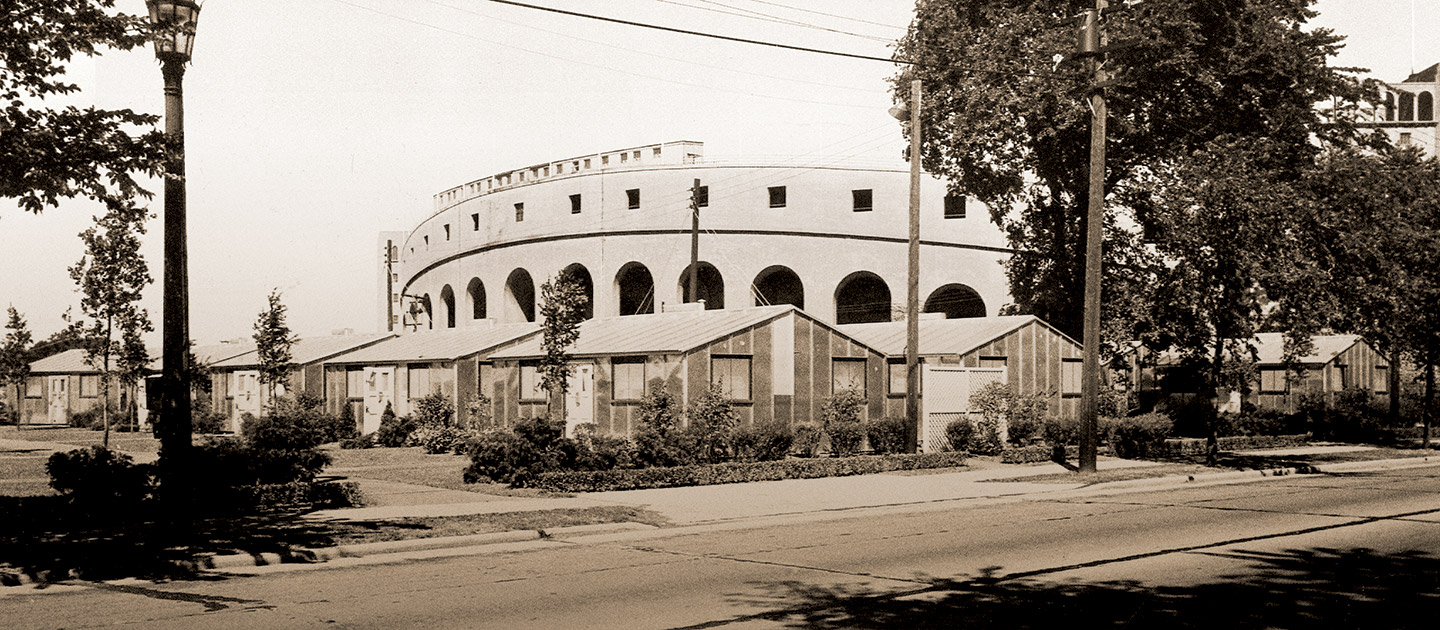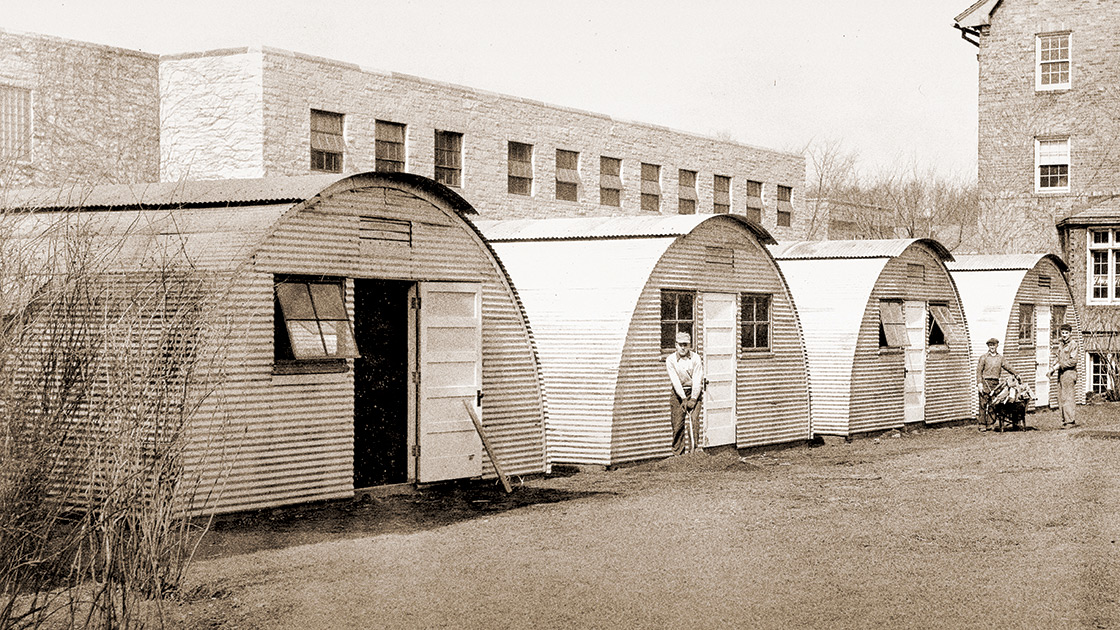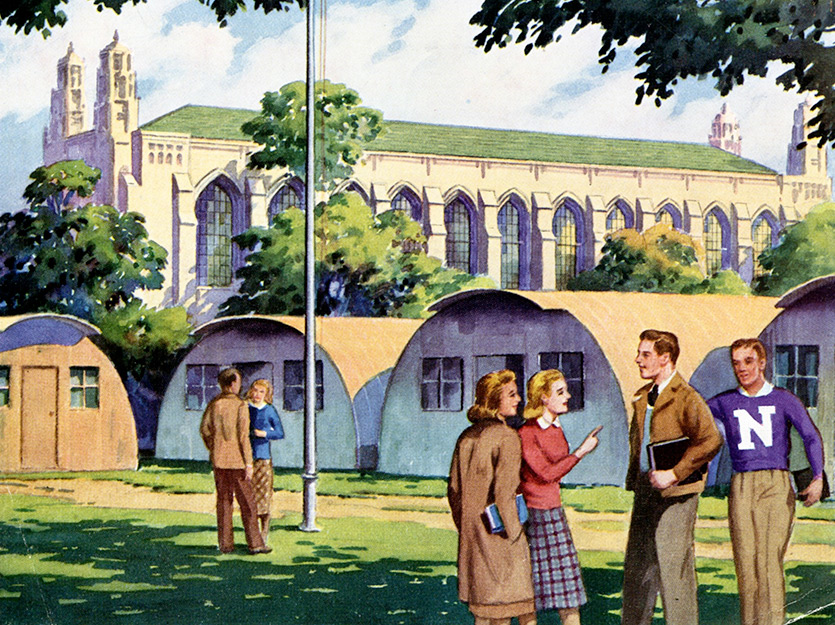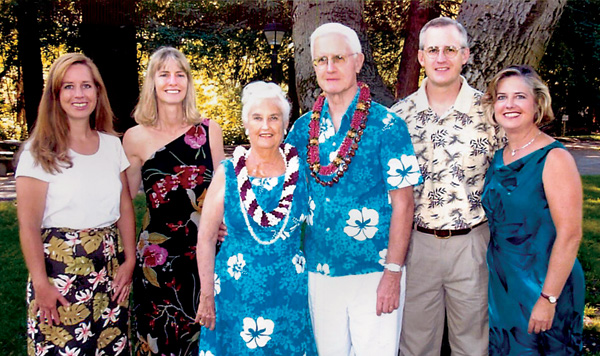No Stranger to Change
While Northwestern feels different—emptier and with courses held remotely—another period of notable change posed a totally different set of challenges.

Melville Hodge (’52) arrived on campus in September 1947 as a 17-year-old from Rock Island, Illinois, prepared to study electrical engineering. He brought with him a single suitcase of belongings, little familiarity with Evanston or Chicago, and few expectations of what student housing would look like.
Despite at least 50 dormitories and fraternity and sorority houses then on the Evanston campus, Hodge was one of more than 400 students who spent the academic year living in one of dozens of Quonset huts composed of lightweight, portable materials and assembled in days. Erected from Deering Meadow to what was then known as Dyche Stadium, the huts were built to meet the surge in demand for student housing following the end of World War II.
We were used to all sorts of limitations in life from the war. I can’t say that winding up in the Quonset hut was any big shock. I never knew anything different. It felt standard for college life.
Each Quonset hut housed up to eight students who slept on wrought iron bunk beds placed at opposite ends of the unit. They studied at desks constructed out of sheet metal, and each was provided a small bookcase and two-drawer chest. A bathroom, which included a 3′x3′ shower, toilet, and wash basin, stood in the middle of each hut. Electric heaters provided relief from the cold Evanston winters. Hodge lived in one of the “Music Huts,” named for their proximity to the old School of Music building at the corner of Clark Street and Sherman Avenue.
“We were used to all sorts of limitations in life from the war,” Hodge says. “I can’t say that winding up in the Quonset hut was any big shock. I never knew anything different. It felt standard for college life.”

An Enrollment Explosion
As World War II hit in 1942, Northwestern faced enrollment declines as students headed to war. Fred D. Fagg, Jr., then-vice president and dean of faculties, described the University as a ship that “may not be able to detour around the storm center.”
But in the aftermath, that changed. Hundreds of thousands of American military members returned home, ready to resume their lives. The Servicemen’s Readjustment Act of 1944, commonly known as the “GI Bill,” offered significant education and training subsidies to support vets returning to college as well as those who’d previously never had the means to get a degree.
Northwestern felt the impact immediately.
“The United States is engaged in a magnificent experiment in the democratization of higher education,” wrote Northwestern President Franklyn Bliss Snyder in the University’s 1945–1946 President’s Report. “Northwestern will participate to the full in this experiment.”

In September 1945, 933 veterans enrolled. By Spring Quarter, that number exploded to more than 6,100. At the start of the 1946–47 academic year, a total of more than 10,000 veterans were enrolled between Northwestern’s Evanston and Chicago campuses—an 11-fold increase from the previous year. By September 1947, veterans on campus totaled more than 11,000.
That meant the full- and part-time student population grew from 19,000 in 1939 to nearly 30,000 just nine years later, an enrollment higher than ever before in the University’s history. The Quonset hut project, which erected nearly 100 huts in total at a cost of $750,000—nearly $11 million today—provided a temporary, yet effective housing solution for incoming students.
Life in the Quonset Huts
Although he had not served in the military, Hodge had experienced the hardships of life during wartime, assuming several full-time jobs at home during the war out of necessity—he delivered mail at age 15.
Once on campus, Hodge quickly connected with his roommates, many of whom had returned from serving overseas.
“Some of my very best friends were people back from service,” says Hodge, noting that two, the late Robert J. Anderson (’52) and the late Donald B. Helm (’51), served as a fighter pilot in the European theater and a naval officer on a destroyer in the Pacific, respectively. “I probably picked up some bad habits from my other roommates. They taught me how to drink coffee and smoke cigarettes.”
Hodge, who later endowed Northwestern Engineering’s Melville and Jane Hodge EXCEL Scholars program, a bridge program for incoming McCormick students who have demonstrated leadership skills, says the campus community reflected the mood of the country at that time.
“There was a general spirit of togetherness in society, especially among college students,” Hodge says. “There’s a lot of political division today, but in my mind, back then it just didn’t exist. During the war and after, people were so united.”
Full Steam Ahead
By 1946, despite facing the challenges caused by the enrollment boom, Vice President Fagg wrote that the University was poised to enjoy calmer waters.
“It seems to me that we find the ship in excellent condition, the cargo intact, and the crew eager to break out full sail, accepting the challenge of ever-widening horizons.”
Through times of change, this look back offers hope for the future.“
One of the best parts of my role as dean is talking to alumni who have seen this institution go through dramatic changes before,” says Julio M. Ottino, dean of the McCormick School of Engineering. “Few organizations have the staying power of universities, and I am certain that we will continue to adapt to achieve our mission in new and innovative ways.”
———
Special thanks to Kevin Leonard, Northwestern University archivist, for supporting research on this story.

